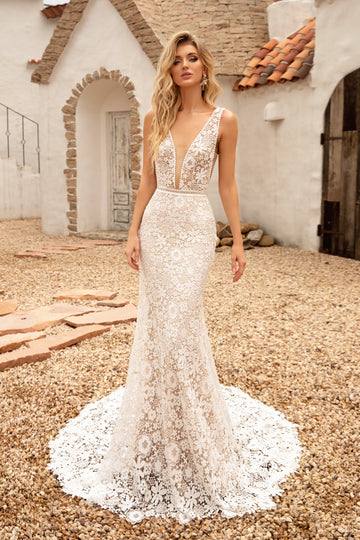From Sketch to Reality: The Custom Dress Journey Explained
From Sketch to Reality: The Custom Dress Journey Explained
The world of fashion is rapidly evolving, and custom dresses have become a significant trend for brides, prom attendees, and modern fashion enthusiasts alike. The journey of creating a custom dress is both exciting and intricate, transforming initial sketches into stunning realities. In this article, we will explore the steps involved in this artistic process, delve into the importance of unique designs, and discuss tips for those considering a custom dress.
Understanding Custom Dress Design
Creating a custom dress begins with understanding the client’s vision. Fashion designers often ask questions that help to visualize the dress's overall vibe, style, and occasion. This interaction is vital, as it sets the tone for the entire design process.
Initial Consultation
The first step in your custom dress journey is the initial consultation. Here, you'll share ideas, preferences, and any inspirations you have. It’s a collaborative process where both the designer and client contribute ideas. This stage is crucial because it forms the foundation for the design.

| Consultation Elements | Description |
| Color Choices | The hues that resonate with the client’s personality and the event theme. |
| Fabric Selection | Choosing materials that will complement the design and provide comfort. |
| Style Preferences | Discussing silhouettes and styles that the client favors. |
| Budget Considerations | Establishing a budget to guide the design options. |
Sketching the Design
After the consultation, the designer translates the ideas into a sketch. This sketch acts as a blueprint for the dress. Designers possess varying techniques and styles, so it’s essential to choose someone whose artistic vision resonates with your desires. The sketch will typically include details such as:
- Silhouette: A-line, mermaid, ball gown, or sheath styles.
- Details: Necklines, sleeves, and embellishments.
- Color Palette: What the final colors will look like.
Fabric Selection and Purchase
Once the sketch is finalized, it’s time to select fabrics. Designers will guide the client through an array of options that complement the design while also considering seasonal trends and event specifications. Choosing the right fabric is crucial, as it influences the dress's overall drape, comfort, and visual appeal.
Common fabric choices include silk, satin, chiffon, and lace. Each fabric carries its unique characteristics, so discussing these with your designer will ensure your dress not only looks good on paper but also feels amazing when worn.
Prototyping your Dress
After fabric selection, the next phase involves creating a prototype or muslin version of the dress. This step is critical, as it allows both the designer and the client to assess the fit, comfort, and overall appearance of the dress before production begins. Adjustments are made during this phase to ensure the final dress meets expectations.
Fittings
Fittings are scheduled during the prototyping phase to ensure the dress aligns perfectly with the client’s measurements and preferences. Multiple fittings may be necessary as tweaks arise. It’s essential for clients to provide honest feedback during these sessions to achieve the perfect look.
| Fitting Phases | Purpose |
| Initial Fitting | Evaluate the prototype fit and gather feedback. |
| Adjustments | Making necessary changes based on feedback. |
| Final Fitting | Ensure the dress looks and feels perfect before the final production. |
Final Production
Upon successful fittings and adjustments, the dress enters the final production phase. Skilled seamstresses will create the dress, carefully following the agreed-upon designs. This is where the magic happens, transitioning from sketch to real fabric. JavaScript, for example, can even be used in fashion technology for rapid prototyping and pattern adjustments, making this process more efficient.
Completion and Delivery
Once the dress is made, it goes through quality checks to ensure every detail aligns with the original design. After final touches, the dress is packaged beautifully and prepared for delivery. Supposing you are a bride-to-be in Los Angeles working with a designer, expect the excitement of trying on your dream dress to culminate in a memorable moment before your special day.
Common Questions About Custom Dresses
1. How long does the custom dress process take?
The time frame for creating a custom dress varies but typically ranges from 4 to 6 months, depending on the complexity of the design and the designer's schedule.
2. What is the cost of a custom dress?
Costs can vary significantly based on design intricacy, fabric choice, and designer experience. Generally, custom dresses can range from $500 to $10,000 or more.
3. Can I make changes during the process?
Yes! The process is collaborative, and constructive feedback is encouraged during fittings and prototyping.
Conclusion
Embarking on the journey from sketch to reality for a custom dress is an exhilarating experience rich with collaboration, creativity, and personal touch. It allows for a unique expression tailored specifically for you, making special occasions memorable. When considering a custom dress, engage deeply in the design process, communicate openly with your designer, and enjoy every moment of this remarkable transformation.
Final Suggestions: Always begin with clear ideas and a budget. Don’t hesitate to ask your designer questions, share inspirations, and be honest during fittings. This ensures you achieve the dress of your dreams – one that is a true reflection of your style and personality!
